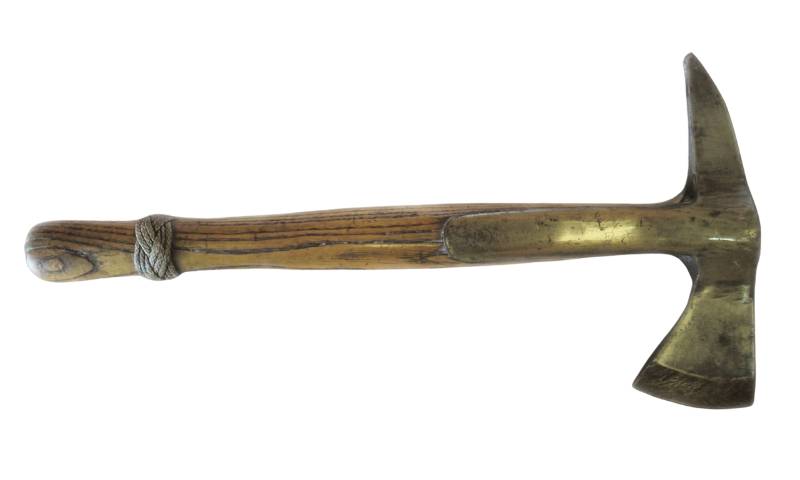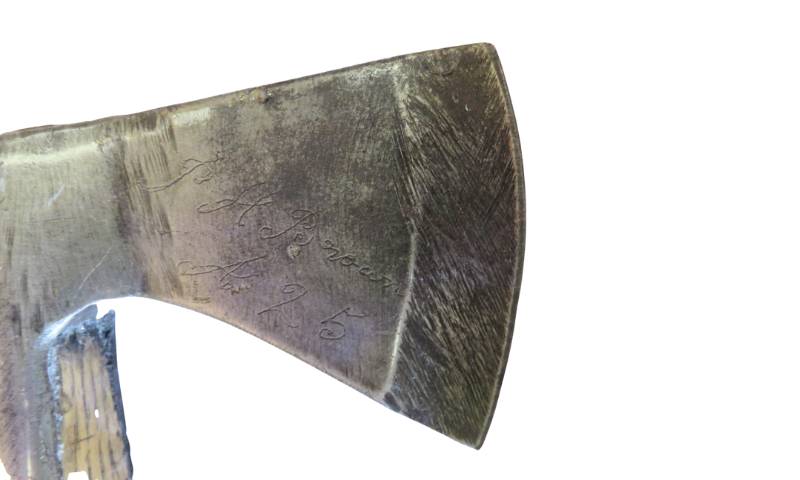Origins
Axes have been an essential piece of kit since the fire insurance brigades formed after the Great Fire of London in 1666. In 1889 Metropolitan Fire Brigade Chief Officer Captain Sir Massey Shaw noted that firefighters “to be successful, must enter buildings...through holes cut by himself in the gates, the walls & roof”
Sometimes when you look closer there are intriguing details on object to explore that can tell you more about the object and its story. Here are a few insights about this fire axe.

Engravings
Etched onto the metal of the axe head are several useful details, including the name of the firefighter it belonged to; P A Brown, the station call sign; A25, and the manufacturer; Gilpins and LCC (which stands for London County Council).

Exploring the details
If we came across this object, without any context, the LCC marking helps us to start to date the era when it was in use. The local government body was responsible for London Fire Brigade from 1889 until 1965, when the Greater London Council was formed.
The name Gilpins is stamped neatly into one side of the axe head. Gilpins was a tool manufacturer originally based in Cannock, north of Birmingham. It started trading 1763, went through some restructures over the years, and was dissolved as recently as 2014. They also produced axes for other London-based organisations including the London and North Western Railway in the 1900s.

Station call sign
The station call sign A25 refers to Westminster Fire Station. This station opened in 1906 on Greycoat Place. Originally it was crewed by a Station Officer, 13 firefighters and 3 coachmen who cared for the horses. The fire station was closed in 2014.
Finally, the firefighters name, P A Brown is a bit trickier to research at the moment, as our archive records are in deep storage, and this will be something we can look at further in the future.
However, if you recognise the name and have any information you’d like to share we’d love to hear it and join it up with the museum record for the axe. Please get in touch with our Curators via museum@london-fire.gov.uk
